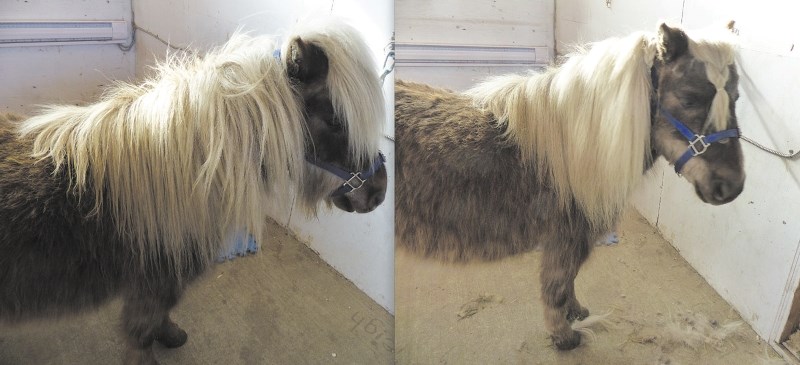Long hairs beware – I am coming for you!
I am referring to the extremely long winter hair that my horses are still wearing even though we have officially “turned the corner” into spring.
My miniature horses look like a herd of woolly mammoths with their long beards and hairy feet.
As we head into the muddy season, I can help them out by clipping some of the unnecessary long hair.
My horses live outside all the time so I would not take away any of their body hair, as it protects them from the elements, but the beards under their faces and the really long hair on their legs has to go.
In actual fact, the long hair around the feet can promote unhealthy skin conditions by trapping moisture and wet mud against the skin, which in turn could lead to the nasty health problem ‘scratches’ (also called pasture dermatitis, dew poisoning, greasy heel, mud fever).
Having said this, there are some breeds where excessive hair on the lower legs and feet (called ‘feathers’) is a trait of the breed and not to be trimmed (e.g. Clydesdales, Gypsy Vanners). For these breeds, it is critical to keep the feathers clean and as dry as possible to prevent scratches from developing.
Once the decision is made that some clipping is required, what do you do next?
The first thing to do is assemble the equipment you will require. Make sure you have the correct clippers for the job at hand (there are different sizes and powers for different jobs) and that the clipper blades are sharp. Dull blades will not clip anything.
Organize your workspace to do the clipping. Make sure you have sufficient length of cord if you are using corded clippers (extension cord may be required), your work area is clear of obstructions, you have a safe way of securing the horse and that you are dressed appropriately (no lip gloss!) including clothes that won’t capture the loose horse hair.
Clean your horse thoroughly. Dirt on the horse will significantly reduce the effectiveness of clipping and will dull the clipper blades much faster. Ideally you would bathe the horse the day before clipping, but at this time of year that is not generally practical so a really good, thorough grooming will do.
Ensure your horse is comfortable with the clippers. Turn the clippers on while away from the horse. Let the horse feel the vibration and hear the noise on a non-ticklish area (like the neck) without doing any clipping.
If your horse is comfortable with that activity on both sides, then proceed with the clipping.
What you clip is based on what you are doing.
In my case, at this time of year, I only clip the lower legs, fetlocks, pasterns, the bridlepath, the beard under the jawline and the really long hairs under the belly.
You may do more if you are working your horses regularly and find they are just getting too hot.
Let the clipping begin!




